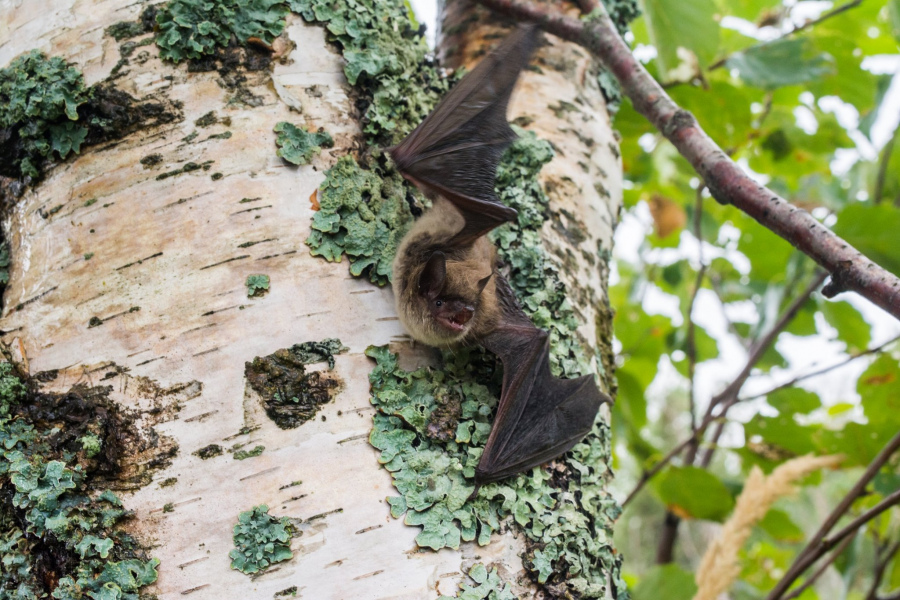Curious about bats? Call 1-833-434-BATS (2287)

Monitoring of the bat population in Atlantic Canada has begun for the 2020 summer season. Members of the public can help by calling 1-833-434-BATS (2287) to report sightings of bats in Prince Edward Island, Newfoundland and Labrador, New Brunswick, and Nova Scotia. Callers will receive up-to-date and accurate information about bat-related topics, including general bat biology and ecology, bats and human health, bats in buildings, and bat conservation.
Since 2017, this toll-free phone number has offered members of the public in Prince Edward Island and Newfoundland and Labrador direct access to bat expertise. The service has now been expanded to include New Brunswick and Nova Scotia under a new project, Stewardship for Protection and Monitoring of Atlantic Canada's Endangered Bat Species. This project is being delivered by the Canadian Wildlife Health Cooperative (CWHC) Atlantic Region, at the Atlantic Veterinary College, University of Prince Edward Island, and is a collaborative project between the CWHC, Environment and Climate Change Canada (ECCC), and the provincial governments of New Brunswick, Newfoundland and Labrador, Nova Scotia, and Prince Edward Island.
The hotline received 422 calls last year (April 2019–2020), more than double the previous year’s number. The participation of the public in helping to monitor bat populations is very important. Citizen science provides valuable information that assists wildlife managers and bat health experts to conserve and recover bat populations in the Atlantic provinces. Last year, the following data were collected in the region:
• 385 reports of bat sightings
• 392 bats counted at maternity colonies
• 17 dead bats submitted for necropsy and testing
The health of bats in Atlantic Canada is threatened by a devastating disease, bat white-nose syndrome (WNS). The rapid decline of bats from WNS resulted in three local bat species being federally listed as Endangered: the little brown myotis, the northern myotis, and the tri-colored bat. WNS was only confirmed in Newfoundland and Labrador in the spring of 2017, so it is crucial that bat populations in the province be closely monitored for spread of the disease. WNS was first detected in Nova Scotia and New Brunswick in 2010–2011, and Prince Edward Island in 2012–2013, and quickly spread throughout each province, killing an estimated 95 percent of the bat population. Bats are still dying from WNS in these provinces. To learn more about WNS, please visit http://www.cwhc-rcsf.ca/wns.php.
Funding for this project is provided by the ECCC Habitat Stewardship Program for Species at Risk, the New Brunswick Department of Natural Resources and Energy Development, the Newfoundland and Labrador Forestry and Wildlife Branch, the Nova Scotia Wildlife Division, and the Prince Edward Island Fish and Wildlife Section.
For information, contact:
Tessa McBurney
Atlantic Bat Conservation Project Technician
Canadian Wildlife Health Cooperative, Atlantic Region
Office: (902) 894-2845/1-833-434-BATS (2287)
tmcburney@cwhc-rcsf.ca/atlanticbats@cwhc-rcsf.ca